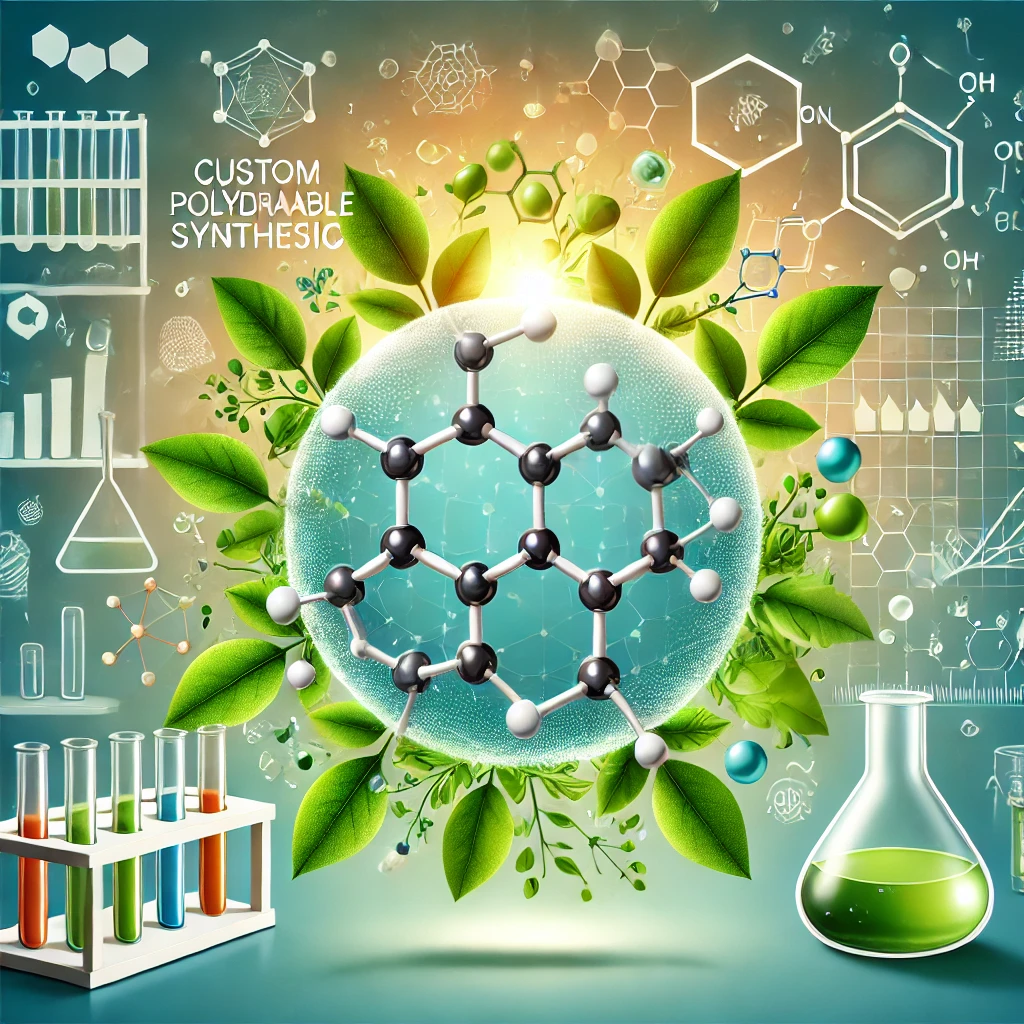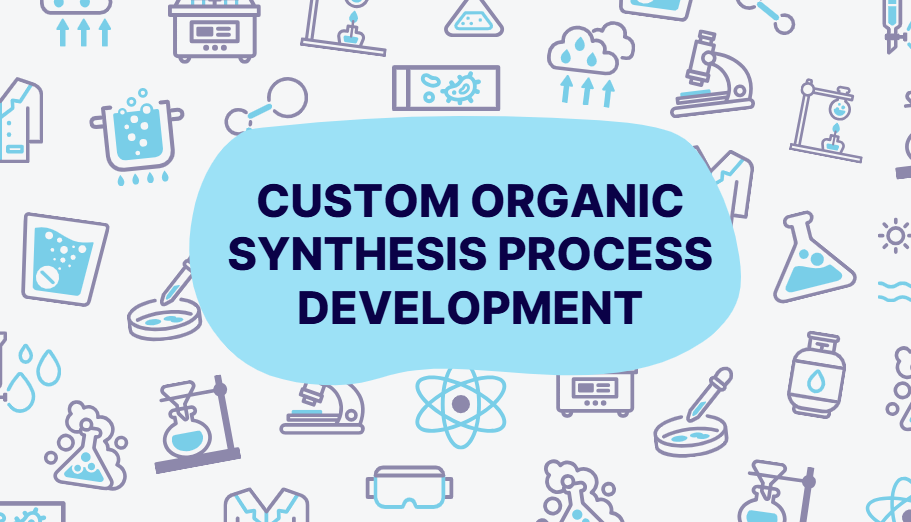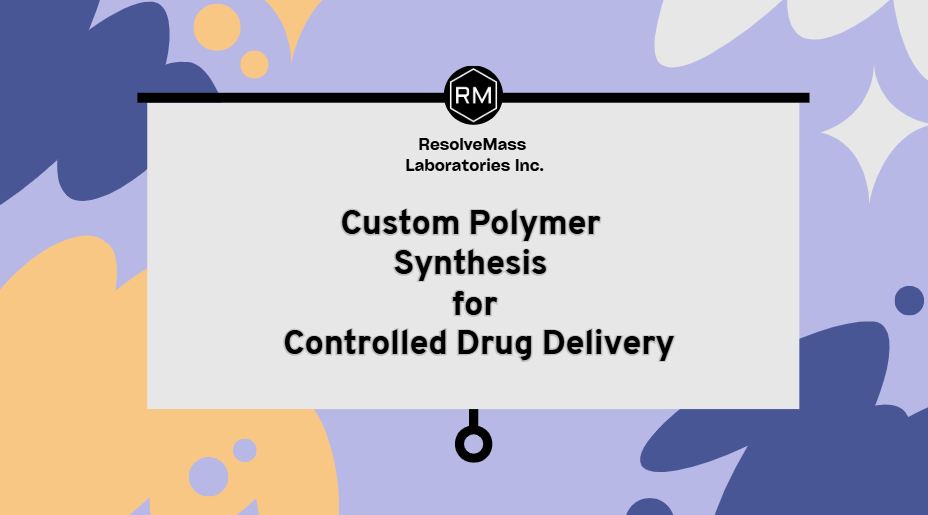The biodegradable polymer industry has witnessed exponential growth in recent years, driven by a global shift toward sustainability and reducing environmental impact. Custom polymer synthesis plays a pivotal role in this transformation, enabling the creation of biodegradable materials tailored for specific applications across packaging, agriculture, medicine, and more.
This article explores the impact of custom polymer synthesis on the biodegradable polymer sector, its methods, benefits, and applications, while highlighting its role in addressing pressing environmental challenges.
Understanding Biodegradable Polymers
What Are Biodegradable Polymers?
Biodegradable polymers are materials that decompose into natural substances like water, carbon dioxide, and biomass under the influence of microorganisms. These polymers provide an eco-friendly alternative to traditional plastics that persist in the environment for centuries.
Types of Biodegradable Polymers
- Natural Biopolymers:
- Examples: Starch, cellulose, chitosan.
- Derived from renewable resources like plants and marine organisms.
- Synthetic Biodegradable Polymers:
- Examples: Polylactic acid (PLA), polycaprolactone (PCL), polyhydroxyalkanoates (PHAs).
- Produced via chemical synthesis, offering higher tunability in properties.
The Role of Custom Polymer Synthesis
Custom polymer synthesis tailors the structure and properties of biodegradable polymers to specific requirements. This process involves:
- Designing Functional Monomers: Selecting monomers that enhance mechanical strength, biodegradability, or compatibility with other materials.
- Controlled Polymerization: Adjusting molecular weight and chain length to influence degradation rates and material performance.
- Surface Functionalization: Modifying polymers post-synthesis to improve adhesion, hydrophobicity, or biocompatibility.
Methods of Custom Polymer Synthesis
- Ring-Opening Polymerization (ROP):
- Common for synthesizing PLA and PCL.
- Allows precise control over molecular weight and polydispersity.
- Step-Growth Polymerization:
- Useful for producing polyesters and polyamides.
- Provides versatility in designing polymer backbones.
- Enzymatic Polymerization:
- Eco-friendly and operates under mild conditions.
- Produces polymers with unique functional groups for medical and food packaging applications.
- Copolymerization:
- Combines two or more monomers to create polymers with hybrid properties.
- Example: PLA-PCL copolymers for controlled drug release.
Applications of Custom Biodegradable Polymers
1. Sustainable Packaging
Custom biodegradable polymers like PLA and starch-based plastics are widely used in:
- Food Packaging: Extending shelf life while reducing plastic waste.
- Compostable Bags: Offering eco-friendly alternatives to polyethylene.
2. Agriculture
- Mulch Films: Custom polymers degrade in soil, reducing the need for plastic retrieval.
- Controlled Release Fertilizers: Biodegradable coatings regulate nutrient delivery.
3. Medical Applications
- Drug Delivery Systems: Custom polymers like polyhydroxyalkanoates enable precise drug release and biodegradation within the body.
- Sutures and Implants: Biodegradable polymers eliminate the need for surgical removal.
4. 3D Printing
Custom PLA blends are optimized for additive manufacturing, offering precision and eco-friendliness in product development.
Advantages of Custom Polymer Synthesis in Biodegradable Materials
- Tailored Degradation Rates:
- Custom synthesis enables precise control over how quickly a polymer decomposes, matching application requirements.
- Enhanced Properties:
- Strength, flexibility, and thermal resistance can be optimized for specific uses.
- Sustainability:
- Leveraging renewable feedstocks and green chemistry reduces environmental footprints.
- Cost Efficiency:
- While initial R&D costs are higher, scalable production often results in economic benefits.
Challenges in Custom Polymer Synthesis
- Complexity of Design:
- Balancing biodegradability with durability requires intricate design and testing.
- Scalability:
- Transitioning from laboratory to industrial-scale production is resource-intensive.
- Cost:
- Customization can be expensive compared to mass-produced materials.
- Regulatory Compliance:
- Meeting environmental and safety standards necessitates rigorous evaluation.
Future Trends in Biodegradable Polymers
1. Bio-Based Feedstocks
Developing polymers from renewable sources like algae and agricultural waste.
2. Smart Polymers
Incorporating stimuli-responsive behavior to create materials that degrade under specific conditions.
3. Advanced Polymer Blends
Combining biodegradable polymers with additives to enhance performance and broaden applications.
4. Nanotechnology Integration
Embedding nanoparticles for improved barrier properties in packaging or enhanced drug delivery.
How ResolveMass Laboratories Can Help
ResolveMass Laboratories specializes in custom polymer synthesis, offering cutting-edge solutions for biodegradable polymer development. Our expertise spans:
- Material Design: Developing polymers with tailored degradation profiles.
- Analytical Testing: Ensuring compliance with industry standards.
- Application Support: From packaging to medical devices, we provide end-to-end assistance.
Explore Our Services
- Custom Polymer Synthesis
- Biodegradable Polymer Solutions
- Material Characterization
Contact Us to discover how we can support your biodegradable polymer projects.
References
- Drumright, R. E., et al. (2000). Biodegradable Polymers Derived from Renewable Resources. Progress in Polymer Science. DOI: 10.1016/S0079-6700(00)00035-9
- Tokiwa, Y., & Calabia, B. P. (2006). Biodegradability of Plastics. International Journal of Molecular Sciences. DOI: 10.3390/ijms7100939
- Gupta, B., et al. (2007). Poly(lactic acid): An overview. Progress in Polymer Science. DOI: 10.1016/j.progpolymsci.2007.04.005


